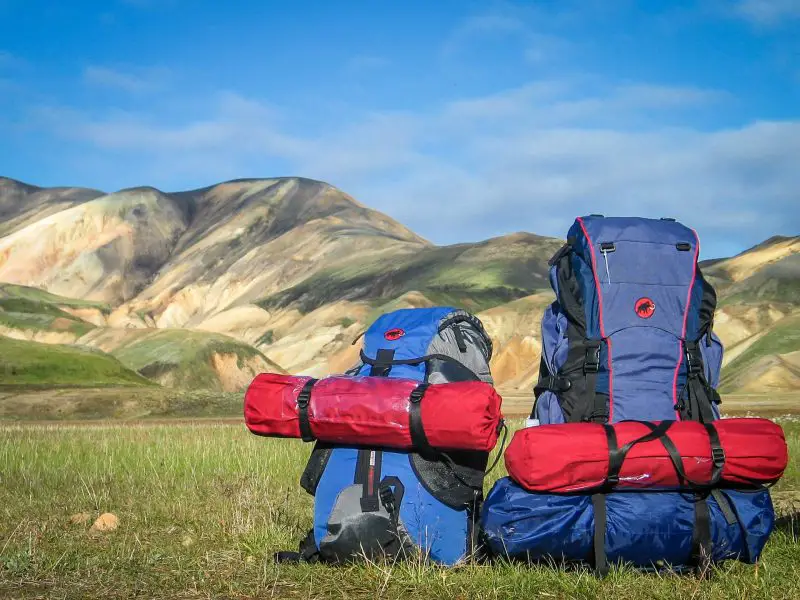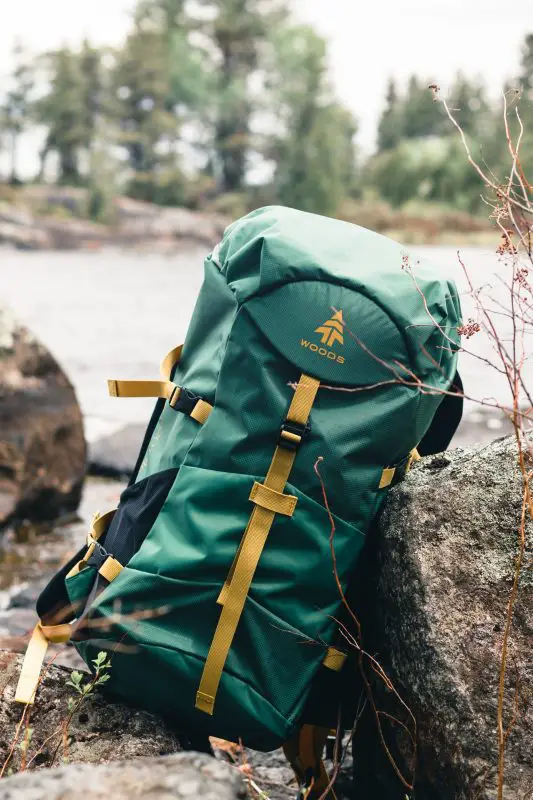Did you know that backpacks were already in use long before they were used in schools? The first backpack started with an ancient iceman, and later backpacks involved World Wars and adventure-seeking mountaineers, even before they became popular as schoolbags.
How Did Backpacks Come About?
Otzi the Iceman, a mummy from the Copper Age 5,200 years ago, carried a wood-frame rucksack made of animal fur. This ancient backpack, as well as his frozen body and other gear, were discovered by hikers in Val Senales Valley in Italy on September 19, 1991.
During the American Civil war, bindles were created from sticks and canvas cloth for soldiers to carry their belongings while on the battlefield. In 1877, Henry Miriam developed one of the first functional U.S. military knapsacks, using sheet metal instead of canvas cloth to reduce the weight that soldiers had to carry during missions.
In 1882, Camille Poirier improved on the military backpack with the Duluth Pack, which had a head strap secured with buckles and straps. Today, it is commonly used for canoe and kayak trips.
In 1908, Ole F. Bergman developed the “Sekk Med Meis” which were bags with wooden frames, made from birch bark and soft fabric, making them easy to compress down, especially during long travels.
By 1914, at the start of World War I, there were improved military backpacks called Haversacks. These were strapped on the upper and lower back and held canteens, ammunition, and other equipment.
After the war, there were further improvements to the backpack, like the Trapper Nelson and the zippered backpack for mountaineers. It wasn’t until the late 1940s that kids started bringing backpacks to school as school bags. These were more lightweight, functional, and stylish.
Since then, backpacks have continuously evolved to serve the equally evolving needs of people in modern times.
Standard Backpack Sizes and Capacities
People probably don’t bother to measure backpacks, but getting the wrong size can mean discomfort and even neck and shoulder pain. It’s better to know about backpack sizes and choose one that matches your needs and size.
The standard everyday backpack measures an average of 22 x 14 x 9 inches (55.9 x 35.6 x 22.9 cm.), which can carry around 15 liters to 35 liters (4 gallons to 9.2 gallons) of supplies at any single time. Backpacks’ carrying capacity are measured in liters because capacity is about volume, not mass.
Backpacks are categorized in 2 ways – by their carrying capacities and their uses. This section discusses backpack sizes in terms of their carrying capacities.
The 3 main categories for carrying capacity are weekend, multiday, and extended-trip backpacks.
Weekend backpacks are ultra-lightweight, highly efficient bags that can be used for carrying supplies for up to 3 nights.
Multiday backpacks are larger-sized outdoor bags that can carry supplies for 3 to 5 nights.
Extended-trip backpacks are oversized backpacks that can carry as many supplies as you need for trips that last over 5 nights.
These are each of their dimensions and capacities listed below:
Type Dimensions Capacity
Weekend 21 x 11 x 8 inches 30 to 50 liters
(53.3 x 27.9 x 20.3 cm.) (7.9 to 13.2 gallons)
Multiday 27 x 16 x 9 inches 50 to 80 liters
(68.6 x 40.6 x 22.9 cm.) (13.2 to 21.1 gallons)
Extended-trip 27 x 16 x 9 inches 50 liters, 80 liters
(68.6 x 40.6 x 22.9 cm.) (13.2 to 21.1 gallons)

Common Uses for Backpacks
The second way backpacks are categorized are according to their use. Also referred to as book bags, knapsacks, rucksacks, satchels, bags, and packs, backpacks have many uses.
There are 3 main categories: hydration, every day, and hiking.
Hydration backpacks are the smallest type, identifiable by a pouch or bladder used to store liquids.
Everyday backpacks are what most people use for anything, including storing school supplies and some hiking trips.
Hiking backpacks are specifically made for carrying large supplies during outdoor excursions.
These are each of their dimensions and capacities listed below:
Type Dimensions Capacity
Hydration 11 x 10 x 4 inches up to 20 liters
(27.9 x 25.4 x 10.s cm.) (up to 3.6 gallons)
Everyday 17 x 8 x 5 inches 15 to 35 liters
(43.2 x 20.3 x 12.7 cm.) (4 to 9.2 gallons)
Hiking 30 x 18.5 x 12.5 inches 20 to 60 liters
(76.2 x 47 x 31.8 cm.) (5.3 to 15.9 gallons)
School Backpack Sizes
School backpacks sizes generally come in small, medium, and large sizes.
A small-sized school backpack can carry supplies from 15 liters to 20 liters. This is recommended for someone who has few classes in a day and probably uses their tablet and laptop more often than their notebooks and books.
A medium backpack can carry supplies from 21 liters to 30 liters. It is recommended for most students with long school days and different subjects.
A large backpack can carry supplies from 31 liters to 40 liters. This is recommended for students who need to carry not only their laptops and notebooks but also books and gym supplies. These usually have sturdy chest straps and padded shoulder straps as well as back ventilation for added comfort.
Hiking Backpack Sizes

For half-day to full-day hikes, daypacks (everyday type) from 15 liters to 35 liters capacity are recommended. A smaller-sized 25-liter backpack is often good enough for half-day hikes. Larger packs in the 30-liter range are needed for all-day or winter hikes for the extra water, clothing, food, and other essentials you will need. If you’re going to carry 25-liters and up in pack volume, choose backpacks with hip belts, since the weight will sit on your hips and not on your shoulders anymore.
For hiking trips of 1-3 nights, select from weekend backpacks already. You need to carry more gear like a sleeping pad, sleeping bag/quilt, sleeping clothes, tent/hammock/shelter, stove, cooking pot and utensils, and more food.
For hiking trips longer than 3 nights, choose from multi-day or extended-trip/expedition backpacks. They are designed to hold huge amounts of food, gear, and supplies usually for professionally guided mountaineering expeditions.
Backpack selection should not only be about a brand or look but must be about intended use and capacity as primary considerations. When you choose based on these criteria, you’re off to a good start wearing a backpack that fits your purposes and provides you with the functionality and comfort that you need.
- What Size is Regular Printer Paper? Quick Guide for Paper Dimensions - June 18, 2023
- What Size is My Monitor: A Comprehensive Guide - June 18, 2023
- How Big is Italy Compared to the US? A Concise Comparison - June 16, 2023

